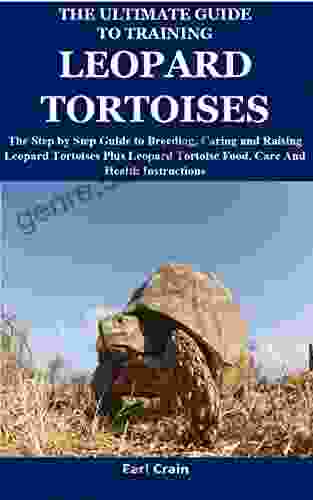Hakes: Biology and Exploitation in Fish and Aquatic Resources

4.7 out of 5
| Language | : | English |
| File size | : | 23294 KB |
| Text-to-Speech | : | Enabled |
| Screen Reader | : | Supported |
| Enhanced typesetting | : | Enabled |
| Print length | : | 356 pages |
| Lending | : | Enabled |
Hakes are a family of marine fish that are found in all oceans. They are an important food source for humans and are also used in the production of fish meal and fish oil. Hakes are typically found in deep water, and they feed on a variety of fish, squid, and crustaceans.
There are over 100 species of hakes, and they vary in size from small to large. The largest species of hake, the giant grenadier, can grow to be over 6 feet long and weigh over 100 pounds.
Biology of Hakes
Hakes are typically long and slender fish with a pointed snout and a large mouth. They have two dorsal fins, the first of which is spiny, and a single anal fin. The scales of hakes are small and cycloid, and they have a lateral line that runs along the middle of their body.
Hakes are opportunistic predators that feed on a variety of fish, squid, and crustaceans. They typically hunt at night, and they use their large mouths to swallow their prey whole.
Hakes are relatively long-lived fish, and they can live for over 20 years. They reach sexual maturity at around 5 years of age, and they spawn in the spring and summer. Hakes are batch spawners, and they release millions of eggs into the water column. The eggs hatch into larvae, which drift with the current until they metamorphose into juveniles.
Exploitation of Hakes
Hakes are an important food source for humans, and they are caught in large quantities by commercial fisheries. The main fishing methods used to catch hakes are bottom trawling and longlining.
Bottom trawling is a method of fishing that involves dragging a large net along the bottom of the sea. This method is very effective at catching fish that live on or near the bottom, such as hakes. However, bottom trawling can also damage the seafloor and the marine life that lives there.
Longlining is a method of fishing that involves setting out a long line with baited hooks. This method is less effective than bottom trawling, but it is more selective and it does not damage the seafloor.
Hakes are also used in the production of fish meal and fish oil. Fish meal is a high-protein feed ingredient that is used in the production of aquaculture feed. Fish oil is a source of omega-3 fatty acids, which are essential for human health.
Challenges Facing the Management of Hake Stocks
The management of hake stocks is a challenging task. Hakes are long-lived fish that are slow to reach sexual maturity. This means that they are vulnerable to overfishing. In addition, hakes are often caught as bycatch in fisheries that are targeting other species.
The main challenges facing the management of hake stocks are:
* Overfishing * Bycatch * Habitat destruction * Climate change
Overfishing is the most serious threat to hake stocks. When hakes are fished at a rate that is faster than they can reproduce, their populations decline. This can lead to the collapse of hake stocks, which can have a devastating impact on the marine ecosystem.
Bycatch is another major threat to hake stocks. Bycatch occurs when hakes are caught unintentionally in fisheries that are targeting other species. Bycatch can be a significant source of mortality for hakes, and it can also damage their populations.
Habitat destruction is another threat to hake stocks. Hakes rely on healthy seafloor habitats for feeding and spawning. When these habitats are damaged or destroyed, it can make it difficult for hakes to survive and reproduce.
Climate change is also a threat to hake stocks. Climate change is causing the oceans to warm and acidify, which can have a negative impact on hakes. Warmer waters can lead to changes in hake distribution and abundance, and acidification can make it more difficult for hakes to build their shells.
Hakes are an important food source for humans and play a valuable role in the marine ecosystem. However, hake stocks are facing a number of challenges, including overfishing, bycatch, habitat destruction, and climate change. The management of hake stocks is a complex task, but it is essential to ensure the long-term sustainability of these valuable fish stocks.
4.7 out of 5
| Language | : | English |
| File size | : | 23294 KB |
| Text-to-Speech | : | Enabled |
| Screen Reader | : | Supported |
| Enhanced typesetting | : | Enabled |
| Print length | : | 356 pages |
| Lending | : | Enabled |
Do you want to contribute by writing guest posts on this blog?
Please contact us and send us a resume of previous articles that you have written.
 Page
Page Genre
Genre Reader
Reader E-book
E-book Magazine
Magazine Newspaper
Newspaper Sentence
Sentence Bookmark
Bookmark Shelf
Shelf Bibliography
Bibliography Foreword
Foreword Preface
Preface Synopsis
Synopsis Annotation
Annotation Manuscript
Manuscript Scroll
Scroll Tome
Tome Bestseller
Bestseller Biography
Biography Autobiography
Autobiography Reference
Reference Encyclopedia
Encyclopedia Dictionary
Dictionary Thesaurus
Thesaurus Narrator
Narrator Resolution
Resolution Catalog
Catalog Archives
Archives Periodicals
Periodicals Study
Study Research
Research Scholarly
Scholarly Special Collections
Special Collections Interlibrary
Interlibrary Study Group
Study Group Thesis
Thesis Dissertation
Dissertation Storytelling
Storytelling Reading List
Reading List Theory
Theory Nicole Helm
Nicole Helm Bob Gendron
Bob Gendron Brenda Hillman
Brenda Hillman Brittany Boykin
Brittany Boykin Ranjan Kumar Varanasi
Ranjan Kumar Varanasi Bond Halbert
Bond Halbert David Alfonzo
David Alfonzo Paula Marantz Cohen
Paula Marantz Cohen Philippe Matthews
Philippe Matthews Alex Thomas Davis
Alex Thomas Davis James Wilson Penn
James Wilson Penn Cornell Deville
Cornell Deville Katie Mitchell
Katie Mitchell Richard L Crocker
Richard L Crocker Erika Grey
Erika Grey Carole Bollini
Carole Bollini Bob Martin
Bob Martin Maggy Anthony
Maggy Anthony Gloria Austin
Gloria Austin Charlene A Carruthers
Charlene A Carruthers
Light bulbAdvertise smarter! Our strategic ad space ensures maximum exposure. Reserve your spot today!

 Emmett MitchellUnveiling the Synergistic Relationship between Business Peacebuilding and...
Emmett MitchellUnveiling the Synergistic Relationship between Business Peacebuilding and...
 Robert HeinleinMaster 2000 English Collocations In Used Explained Under 20 Minutes Day In...
Robert HeinleinMaster 2000 English Collocations In Used Explained Under 20 Minutes Day In... Howard BlairFollow ·11.9k
Howard BlairFollow ·11.9k Percy Bysshe ShelleyFollow ·10.5k
Percy Bysshe ShelleyFollow ·10.5k Fred FosterFollow ·10.4k
Fred FosterFollow ·10.4k Ken SimmonsFollow ·18.1k
Ken SimmonsFollow ·18.1k Blake BellFollow ·10.1k
Blake BellFollow ·10.1k Steve CarterFollow ·15.7k
Steve CarterFollow ·15.7k Garrett BellFollow ·16.8k
Garrett BellFollow ·16.8k Jack LondonFollow ·2.9k
Jack LondonFollow ·2.9k

 Rodney Parker
Rodney ParkerBasics Beginner Guide To Stage Sound
Start with a good source. The...

 Glenn Hayes
Glenn HayesKiwi in the Realm of Ra: Exploring the Mystical Kiwi...
Origins and...

 John Grisham
John GrishamAdvances In Marine Biology Volume 71
Unveiling the Hidden Wonders...

 Edison Mitchell
Edison MitchellGoodbye Brings Hello: Embracing the Transformative Power...
In the tapestry of life, endings...
4.7 out of 5
| Language | : | English |
| File size | : | 23294 KB |
| Text-to-Speech | : | Enabled |
| Screen Reader | : | Supported |
| Enhanced typesetting | : | Enabled |
| Print length | : | 356 pages |
| Lending | : | Enabled |












